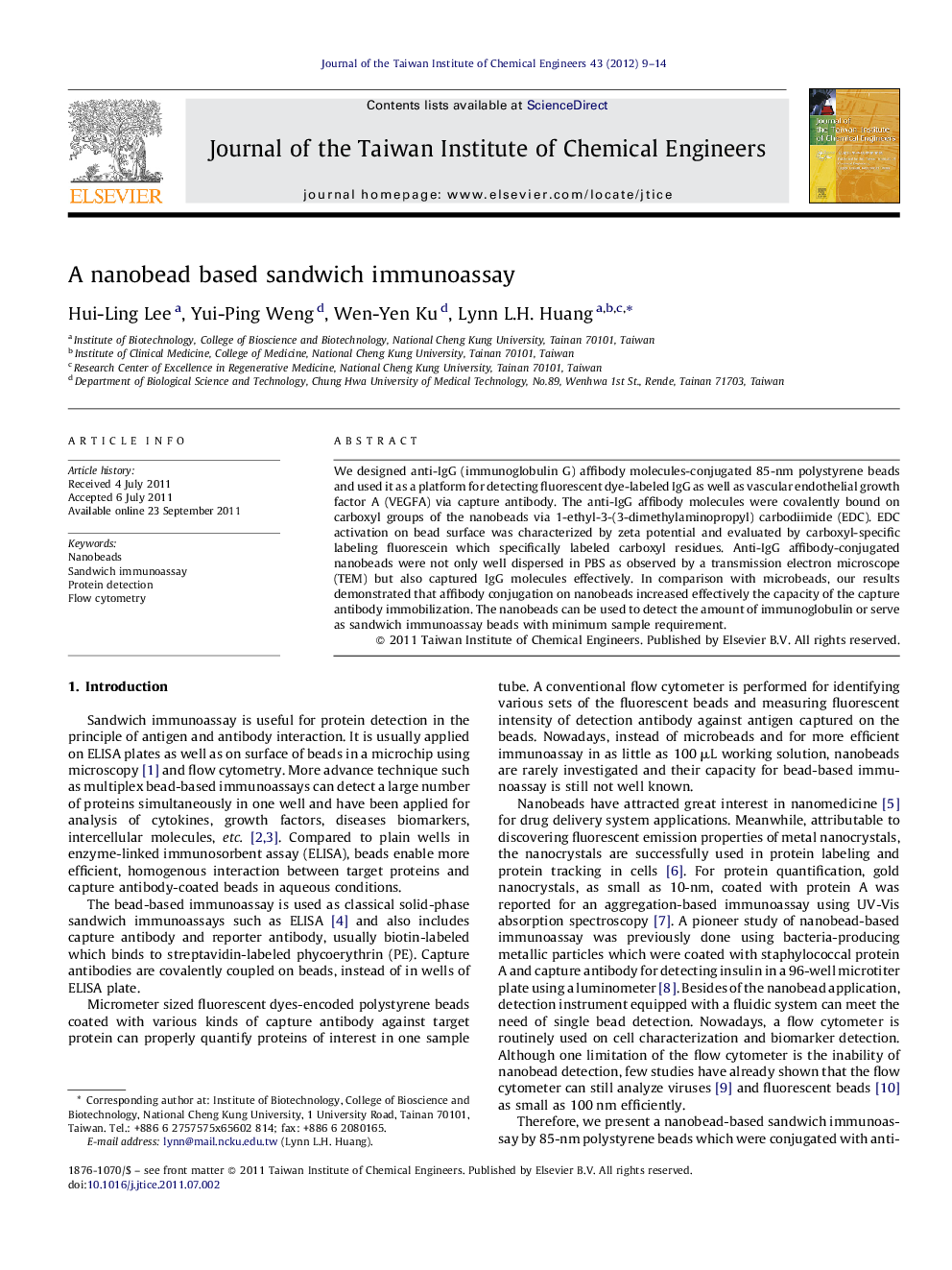| Article ID | Journal | Published Year | Pages | File Type |
|---|---|---|---|---|
| 691416 | Journal of the Taiwan Institute of Chemical Engineers | 2012 | 6 Pages |
We designed anti-IgG (immunoglobulin G) affibody molecules-conjugated 85-nm polystyrene beads and used it as a platform for detecting fluorescent dye-labeled IgG as well as vascular endothelial growth factor A (VEGFA) via capture antibody. The anti-IgG affibody molecules were covalently bound on carboxyl groups of the nanobeads via 1-ethyl-3-(3-dimethylaminopropyl) carbodiimide (EDC). EDC activation on bead surface was characterized by zeta potential and evaluated by carboxyl-specific labeling fluorescein which specifically labeled carboxyl residues. Anti-IgG affibody-conjugated nanobeads were not only well dispersed in PBS as observed by a transmission electron microscope (TEM) but also captured IgG molecules effectively. In comparison with microbeads, our results demonstrated that affibody conjugation on nanobeads increased effectively the capacity of the capture antibody immobilization. The nanobeads can be used to detect the amount of immunoglobulin or serve as sandwich immunoassay beads with minimum sample requirement.
► Anti-IgG affibody-conjugated nanobeads can bind capture antibody effectively. ► Anti-IgG affibody-conjugated nanobeads can be used for IgG immobilization or IgG detection. ► IgG immobilized nanobeads can be used in a bead-based sandwich immunoassay by flow cytometry.
